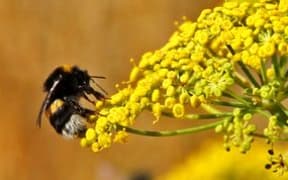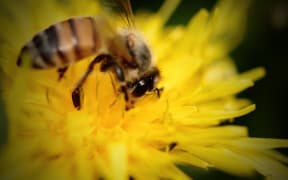A bee scientist says the appearance of a new honey bee parasite is the last thing beekeepers need, with the most serious pest, the varroa mite, becoming more difficult to control.
The gut parasite, Lotmaria Passim, has been found in beehives on Coromandel Peninsula and in the southern North Island.
Plant and Food Research bee unit head Mark Goodwin said the discovery had serious implications for the bee industry, because it and another parasite, Nosema Ceranae, also present in New Zealand, have been linked with bee colony collapses overseas.
Dr Goodwin said while scientists started to investigate the new parasite, beekeepers were finding it harder to control varroa, which is now resistant to most available chemical treatments.
"Slowly, for most beekeepers, their losses are increasing, as the resistance spreads more and more, and at some stage when the losses get big enough they're going to have to change the way that they manage varroa.
"We have a lot of treatments, they're mainly organic treatments and also physical methods you can use to control varroa, but the problem is at the moment they all require a whole lot more labour.
"That makes it very difficult for beekeepers. You can't manage as many hives as you did before, which changes the economics of the business, of course."
Beekeepers under pressure
Stu Ferguson, a beekeeper in South Wairarapa, mysteriously lost 300 hives last year, and is convinced Lotmaria Passim was to blame.
He's working hard to build immunity in bees in the rest of his hives including moving them to a more isolated area.
"Instead of feeding them straight sugar syrup and so forth, I'm putting all sorts of additives into the sugar, such as aquasea seaweed, citric acid - there's a host of things I'm trying out," he said.
Beekeepers Association president Ricki Leahy said the parasite was a growing problem.
But he said if beekeepers had varroa mite protection under control, bees would be less vulnerable.
"If we were a bee, the varroa on us would be the size of a dinner plate, so you can imagine the poor old bee with several mites on it.
"They're basically boring holes and sucking the blood out, opening the bees up to the whole virus world," he said.



